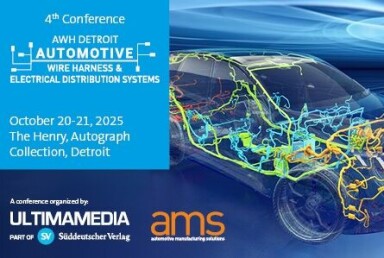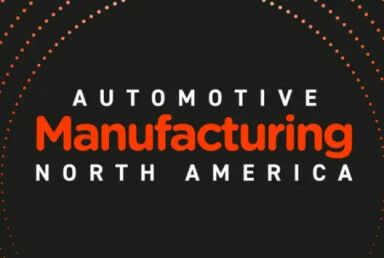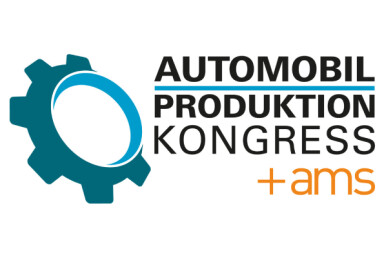Henkel supports innovation with Battery Engineering Center
PARTNER CONTENT
This content was produced by Automotive Manufacturing Solutions in partnership with Henkel
Henkel, a global leader in adhesives, sealants and functional coatings, has opened its revolutionary Battery Engineering Center within its Inspiration Center in Duesseldorf, to address the need to improve safety, performance, quality and price of EV batteries.
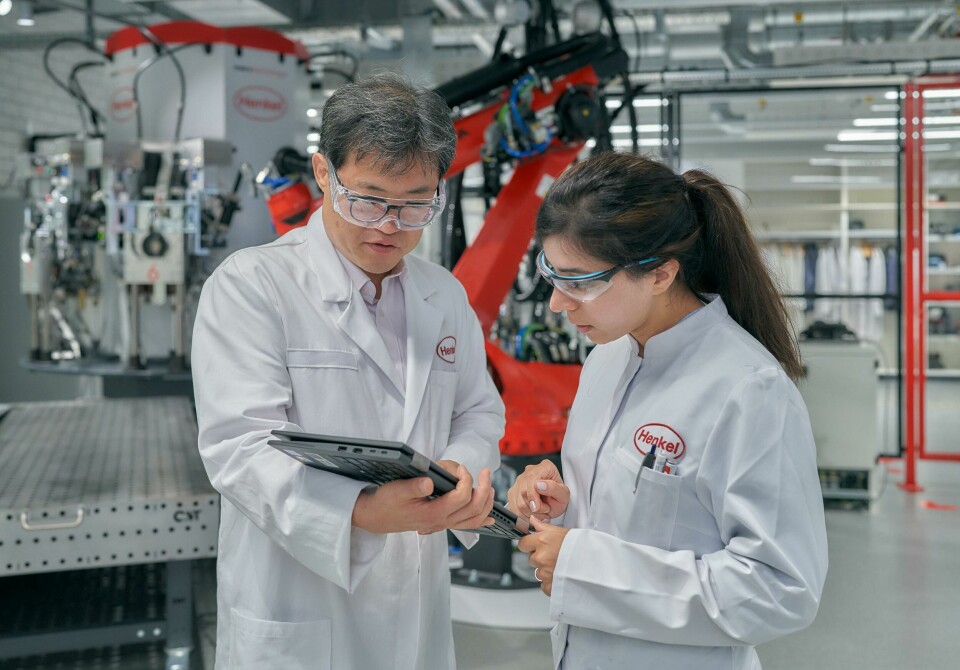
With new battery designs required to fuel the EV revolution, battery engineering and development is crucial to improve safety, performance, quality and price. To address this, Henkel opened its Battery Engineering Center in Germany in September 2023.
Located within its Inspiration Center Duesseldorf, Henkel’s new Battery Engineering Center (BEC) features two high-tech facilities – a Battery Application Center (BAC), which opened in August, and a Battery Test Center (BTC) due to start operating mid-2024.
A flagship of innovation
The BEC will serve as a rapid testing facility for Henkel and its OEM clients, designed to spearhead pivotal technological advancement for the development of next-generation EV batteries. Material application, full-scale battery system testing, simulation and product development are seamlessly integrated under one roof throughout. The BAC and BTC are intended to work seamlessly together, with the help of digital twins and simulations.
The application centre is a robot-based lab, where adhesives can be applied directly in the high-voltage batteries of customers using industrial-scale adhesive dispensing equipment, while the testing centre will contain a state-of-the-art testing rig inside of a fireproof climate chamber, so that the battery’s performance can be tested under different environmental factors such as air temperature and humidity. Both facilities are fully Trusted Information Security Assessment Exchange (TISAX) certified, meaning they meet the automotive industry’s global standard on information security assessments, keeping prototypes and company information protected for clients.
“We can run the usual end of line battery tests for our OEM customers, and we can also examine the performance of our Henkel products directly at the overall battery system level,” said Christoph Hausmann, team lead at the Battery Center. “For instance, for our next generation gap fillers, we can apply them in the battery pack, use the active cooling of that battery pack, and examine the performance and suitability of Henkel products under real environmental conditions or under the test cycles of the OEM.”
Hausmann added that through the BCE, Henkel will be able to serve as a consultant for its customers to advise them regarding the battery manufacturing design or battery construction.
The importance of partnership
With so much focus on development and innovation, Henkel is keen to work with trusted partners to ensure the best results for its customers.
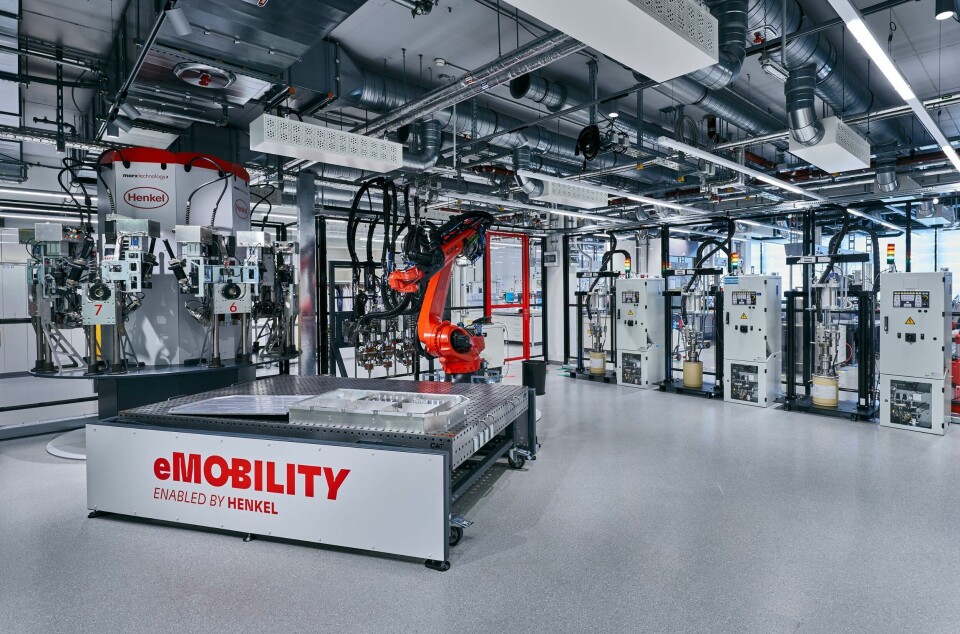
“We are not doing this alone,” said Hausmann. “We set up the battery application lab with our equipment partner Atlas Copco, one of the market leaders in adhesive dispensing technologies.” He said the industrial equipment supplier provided Henkel with the latest dispensing equipment, specifically designed for Henkel’s battery labs. Additionally, Henkel’s partner, AVL a leading manufacturer in battery testing technology, provided the testing equipment and software.
Dr. Carina Goerens, director of Application Engineering, Automotive Components, EIMEA at Henkel said the partnership with team members is equally as important. “We already have all the team members we need to full operate both parts of the BEC, already hired and onboarded,” she said. “We have hired industry experts with the critical know-how, with experts from OEMs and experts from robotics and high-voltage applications. It’s very important that we get additional knowledge and hire new expertise, but in addition, we are experts about our materials.”
With more than 100 years of knowledge and experience in adhesive technology, Henkel is well placed to develop innovative new technologies with expert partners in the field.
Digitalisation and data
Both laboratories will work hand in hand with Henkel’s in-house dedicated simulation teams. Hausmann said that in the application lab, different adhesive performance parameters will be tested, such as dynamic viscosity or dispensing pressures, which are crucial for the later series production. This testing will also help Henkel to further optimise its own products. At the same time, Henkel staff will work on simulations through digital twins to test how the adhesive properties will react to forces such as pressure.
“For instance, we use the ‘squeeze flow test’,” said Hausmann. “The current battery design modules are often pressed in thermal conductive adhesive or thermal gap fillers, and you need to account for those forces and control them to protect your battery cells during the battery assembly.”
While the digital simulations can be used to help the technical engineers in the lab, it’s a mutually beneficial relationship. “Our dedicated modelling and simulation team also rely on the data from the Battery Test Center,” he said, “because they can then validate their simulation data and generate even more data like real-life thermal performance under changing environmental conditions.”
Both labs are connected to Henkel’s in-house cloud database and the company is part of the Catena-X initiative, which allows data storage and tracking of various data, such as carbon emissions of each adhesive product.
Goerens added: “In this first step we were looking at how we can store all this data, gather it together and build that knowledge foundation, like a digital library. Now in the second step, we are looking at how to use artificial intelligence to support us in accelerating and optimising developments and customer trials.”
Quicker, more local, more reliable testing
The fact that both labs are under one roof is no coincidence. Henkel wants to be close to its customer base and be able to test solutions quickly, encouraging OEMs to come to the labs to get speedy support.
Goerens said: “For us, it’s very important to offer fast and uncomplicated support to the customers, where the customers are.”
As an example, she said that one of the first trials that was run in the Battery Application Center took two days, with adhesive testing taking just 30 minutes. Usually, the whole test would take two to four weeks. “The chemist could go directly back to the lab on the third floor with the results after testing a cartridge, optimise it, and come back down to the first floor with another cartridge to test,” she said. “We saved a tremendous amount of time and we’re looking forward to doing that more often.”
Goerens added: “Just yesterday, we had an OEM who was struggling with their dispensing. They had a blockage of material and said it wasn’t suitable. We told them to come here, and we could do some trials, and the team here really did an outstanding job, the customer was impressed in the first half hour. We really showed them that if you have an issue, you can come and speak with us, as we are more a technical consultant than a service organisation.”
In fact, the new BEC is proving so successful that Henkel is planning to expand with similar battery engineering hubs in North America and China, close to its other customer bases. But Goerens said the lab “won’t be copied and pasted”, as the needs of Henkel’s global customers are different. “If you look at North America, we all know they are driving larger and heavier cars like SUVS, so the battery systems will be designed slightly differently,” she said. “So, we will adjust our system according to the needs of the market. We are working here together as a global team, so already our experts are connected and working to leverage the know-how and what we learned in ramping up the first centre of its kind in Europe. We can leverage that expertise and lessons learned and apply them to North America and Asia.”
Hausmann added: “We will share our lessons learned, but the individual market needs will be taken into account by the local Henkel colleagues.”
Sustainability in battery testing
To ensure sustainability throughout the whole life-cycle of the battery, Henkel is applying sustainable practices from sourcing the materials through testing and into the final product.
With a long track record in sustainability, Goerens said the company has an excellent track record, and plans to continue it. She said Henkel is looking into optimising its sourcing of raw materials, to ensure sustainability regarding the materials’ emissions and carbon footprint but also in their logistics, how they are transported and how they are ethically sourced.
She said that the new labs will also be used to research how bonding materials can be de-bonded, so that the materials can be reused. “At the beginning of the year we invested in a big team of product development engineers now developing de-bondable adhesive solutions for batteries,” she said, “so that if we for example offer a structural adhesive which is used to bond the cells to the cooling plate of the battery, this can be de-bonded in the future.”
Goerens added: “We are working here as strong team, not only in strong regional teams, but also strong global teams. We are teaming up here strongly together with sales, product development and application engineering to bring the best service to the customer.”

